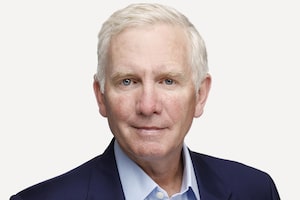Vegetables are harvested in Ontario's Holland Marsh in October of 2009.Peter Power/The Globe and Mail
Polls show the Liberals and Conservatives locked in narrow trading ranges of 30-36 per cent month after month. This gives the impression that no voters are willing to change their position. Whether they will remains to be seen, but there is no question there is the potential for significant shifting.
I've been doing some more work with the latest Harris-Decima numbers, and thought it would be worth passing on a few observations, all of which underscore just how much could change, in theory at least.
» The number of people who say they will only consider voting Conservative in the next election is 18 per cent. It's a relatively great number, but it's only about half of those who look ready to vote CPC in the weekly horserace polls.
» The comparable number for the Liberals is 10 per cent. A big disadvantage that didn't exist 20 years ago. The Conservatives have done a great job of rallying a conservative base, while left of centre votes continue to splinter four ways.
» About six in 10 Canadians indicated they could consider voting Liberal. The total Conservative pool is a shade smaller at 55 per cent. Either party could therefore win a majority, if they could find a way to seal the deal with three quarters of their accessible voters.
» Of the roughly 30 per cent who today say they intend to vote Liberal, one in three say they could consider voting Conservative. Of the 33 per cent who intend to vote Conservative, one in three acknowledge they could consider voting Liberal. Thus, in most ridings, pursuing each others' voters is the single most efficient thing they can do, especially when every point gained is effectively worth two.
Beyond that, where are the opportunities for growth?
» Half of Green and NDP voters could consider the Liberals. In contrast, only a quarter of NDP voters and a third of Green Party voters are open to the Conservatives. This represents abundant opportunity for the Liberals and a huge risk for the Conservatives.
» Among Bloc voters, similar proportions (one third) indicate they might consider either the Conservatives or Liberals. But among Quebeckers as a whole 55 per cent could consider voting Liberal, while only 43 per cent could imagine voting Conservative.
One of the things that's remarkable about these patterns is how much they contrast with the polarization south of the border. We tend to blend our values, and around the middle of the spectrum more than the edges. Almost half of Canadians say they lean right on economic matters but left on social questions: a massive, rich political fishing ground. A social liberal is not always a big-L Liberal, a fiscal conservative not always a big-C Conservative.
For the Liberals to make something of the opportunities, they need to rally voters on the left, and try to destabilize and poach Conservative voters. This past week's announcement about family health care, to be paid for by slowing corporate tax cuts until the books are in better shape, was an example of trying to find that zone.
For the Conservatives to seize their opportunity for a breakthrough win, they need to protect their current support, grab a few points directly from the Liberals, and prevent coalescence on the left. Their effort to pitch more law and order, and to pre-package a centre left coalescence as a marriage of separatists and socialists is undoubtedly part of that strategy.
All of which is to say partisans and observers who yearn for more volatility in the weekly horse race numbers shouldn't assume that because that hasn't happened, that it can't. And given that voters are growing tired of the effects of minority government, there might be more reason to believe that it will happen in the months ahead.
 Bruce Anderson
Bruce Anderson